
There have been so many incredible Android phone launches in 2024 and over recent years too. But which Android handsets are the best of the best? Plenty fall into our best phones list, of course, but this page is completely Apple-free and for Google Android fans only.
We've been busy reviewing all the latest and greatest phones running Google's mobile operating system, which we've compiled into this handy best-of 2024 guide – it combines the most premium Android flagships with more affordable, lower-spec, cost-effective alternatives, and some higher-end future-facing foldables too (check out our best folding phones guide for a fuller list).
Below, we've rounded up the best Android phones on the market today, including models from Samsung, Google, Nothing, OnePlus and more. So which Android phone is best for you? Read on to find out your match made in heaven...
T3 Top Picks
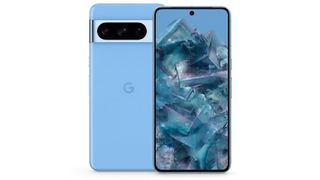
One of the most accomplished Android phones of a recent generation thanks to great battery life and a brilliant point-and-shoot camera system. Now back in 'XL' form (there's also a smaller Pixel 9 Pro), this big-screen master boasts Google's own Tensor G4 hardware and 7 years of software updates – which will only see this handset get better over time.
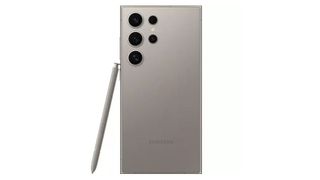
The top-tier Samsung Galaxy handset for 2024 brings the fight to Google when it comes to superb AI features. The S24 Ultra is a larger device, however, and with its integrated S Pen stylus brings even more advanced use case potential to this section of the market. Not that you have to use it: the new ultra-bright flat-panel display is a stunner with few to compete.
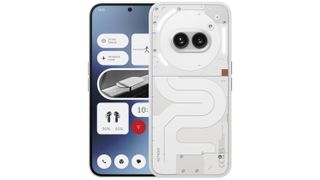
While Google gives a good go with its 'a' series of Pixel handsets, it's Nothing's even more affordable Phone (2a) that comes up top. It even won a prestigious T3 Award 2024. It's got the power, the looks, and the quirks of its Glyph Lighting system. MediaTek's processor ensures it's a powerful performer without compromise despite the price point too.
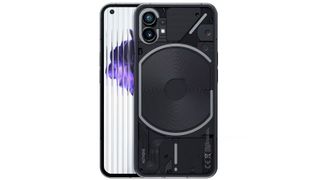
Another affordable Android winner, the Nothing Phone (2) impresses in many ways: its distinctive design, complete with Glyph Lighting, gives it a dash of fun, but also practicality in how it can deliver notifications. Despite this there are no corners cut when it comes to core power and performance, making for a rare moment of unexpected Android phone joy.
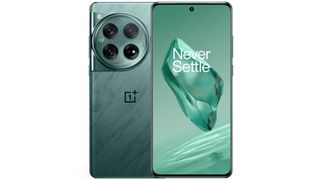
Some may see OnePlus as an outlier brand, but we see it as a super success with great power but for a cut of the typical flagship price point (it's about a third the price of the Galaxy S24 Ultra also on this list, for example). Even so, this 2024 flagship is packed with top tech that's future-proofed and camera-capable, making it a great option to consider.
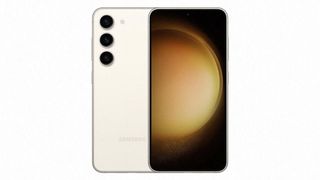
Sure, the Samsung Galaxy S24 also now exists, but its predecessor, the S23, is a similar super and small-scale Android phone that's a real winner if you want a flagship phone but without the typically massive scale associated with so many devices these days. Solid battery life, great performance and a neat design are headline wins for this mini Android success.
Best for most people
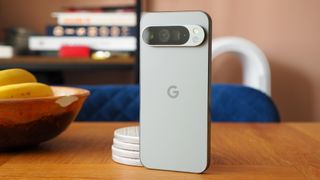

Specifications
Reasons to buy
Reasons to avoid
As said in our review: "The Pixel 9 Pro XL is a beautifully balanced experience, offering heaps of power yet superb longevity per charge in a package that's been redesigned with great consideration."
Sure, that battery bump is now rather massive, but the cameras within it are exemplary – which is a major reason to want to buy Google's biggest-scale flagship. Having the variety, including a periscope optical zoom, really makes a difference.
The display is a beauty, too, at 6.8-inches – there's also the 'normal' Pro model, with a 6.3-inch panel, if you're after a smaller handset. The XL version's scale is what brings that bigger battery, though, and while Samsung's Galaxy S24 Ultra will offer more raw power, the Google handset is very well balanced in performance to longevity.
Like the idea of Google's biggest and best flagship? Read our full Google Pixel 9 Pro XL review to learn more
Best premium

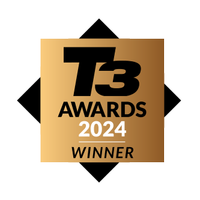
Specifications
Reasons to buy
Reasons to avoid
Much as we love Google's hardware, the winner if you're after a super-premium Android handset is the Galaxy S24 Ultra. It's the T3 Awards 2024 Best Phone winner. It comes complete with integrated S Pen stylus, giving it unique use-cases compared to many of its Android competitors.
Not that you have to use the S Pen. Those who don't will still be treated to a super-powerful performance, complete with new flat-panel display that's absolutely stunning. The cameras are upgraded, too, with better zoom and new Galaxy AI features.
The only downside? It's among the priciest of handsets you can buy and the charging, while ample, isn't as fast as some of the Android competition. But as said in our review: "more durable than ever before thanks to a new titanium finish," the S24 Ultra is a titan of design that really is "the jewel in Android's crown for 2024".
Want to know more? Read our full Samsung Galaxy S24 Ultra review to decide if this is the top-end Android phone for you
Best budget
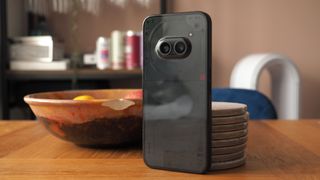

Specifications
Reasons to buy
Reasons to avoid
Nothing released an absolutely stellar affordable handset in the Phone (2a) that it was strong enough to knock even Google's Pixel 7a handset out of this very position. The Nothing is even more affordable than Google's equivalent, but there's no compromise to power, which is what makes it so great.
As said in our Nothing Phone (2a) review: this phone "has got everything going for it," right across the board, from "battery life longevity and overall performance". However, that was caveated with the design, as you'll need to be "on board with the googly-eyed look," referring to the dual camera lenses on the rear.
The more we used the Phone (2a), however, the more we loved it. That's why it won a T3 Award 2024, representing the best affordable handset of the year. There's even a special edition and altogether more colourful version out there if that's to your preference.
Read our full Nothing Phone (2a) review where we explain whether it's the most sensible affordable Android phone you can buy
Best mid-range
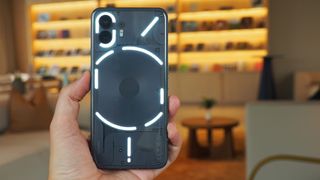
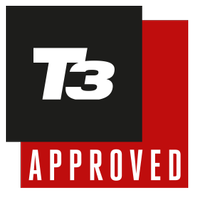
Specifications
Reasons to buy
Reasons to avoid
As said in our review: the "Nothing Phone (2) is so comfortable to hold and use, with a distinctive design; improvements to everyday essentials compared to the first-gen phone, such as battery life and screen quality, are a real mark of quality; and it adds a dollop of fun on top all of that, with features such as Glyph lighting".
It's a fair bit pricier than its predecessor, however, which you could argue makes it more 'sub-flagship' than 'mid-range' in this list, but the additional cost is worth it given just how capable this handset is. There's loads of power on board, and while the cameras aren't going to beat the Pixel or Galaxy options, Nothing is certainly on the rise.
Check out our full Nothing Phone 2 review to see if this affordable yet high-spec handset is the Android phone for you
Best alt flagship
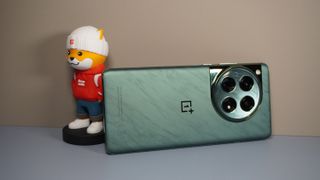

A great affordable Android phone
Specifications
Reasons to buy
Reasons to avoid
It's not just Google and Samsung that are winners when it comes to the best Android phones. Plenty of other makers offer excellent alternatives – something that OnePlus has been at the forefront of since its conception. Now many generations on, the OnePlus 12 is a great alt-flagship with brilliant features but for less money than many rivals.
As said in our review: "If you're on a tighter budget, the OnePlus is a no-brainer. It's about a third of the price [compared to Samsung's Galaxy S24 Ultra], and offers a really substantial amount of tech for the price". There's heaps of power, battery life to smash its rivals, and even a decent array of cameras – although not all quite make the grade, which is one of its bigger downsides.
Check out our full OnePlus 12 review to read why we think it's a great Google Pixel alternative
Best small-scale
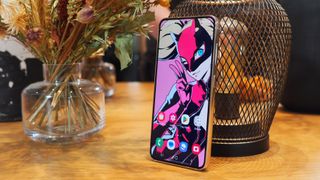

A great smaller-scale Android flagship
Specifications
Reasons to buy
Reasons to avoid
If the mega-scale of the S24 Ultra at the top of this list doesn't appeal and you're seeking a smaller-scale option then the 'base' Galaxy flagship is an excellent option. We've picked the Galaxy S23 for our list, however, as it's not massively different to the newer Galaxy S24, yet delivers a more alluring asking price proposal right now.
The Galaxy S23 is a winner thanks to a versatile cameras arrangement, decent 6.1-inch display, and flagship levels of power that many small-scale alternatives (in our best compact phones list) can't necessarily rival. Yes, battery life suffers somewhat given the scale, but it's an acceptable innings and all part of living with a small yet mighty handset.
Read our full Samsung Galaxy S23 review to see if this small-sized Android flagship is the right choice for you
Best clamshell
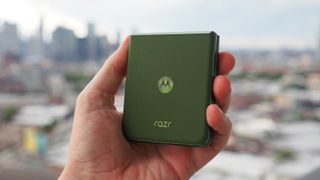
Specifications
Reasons to buy
Reasons to avoid
As said in our review: "This Motorola is easily the best [clamshell] flip phone you can buy. It's nicely upgraded compared to its predecessor and has the biggest and most usable cover display too."
It's that cover display which makes the most difference, including the ability to run any apps on it that you wish – which isn't something its Samsung competition can muster.
But with so much display real-estate to entertain, the battery life isn't especially brilliant. As per all folding phones, the display crease isn't ideal – so that's a compromise to consider. Still, Motorola comes out on top when it comes to clamshells.
Read our full Motorola Razr 50 Ultra review to see why this is a choice clamshell flip phone
Best foldable
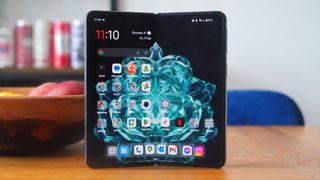

8. OnePlus Open
Specifications
Reasons to buy
Reasons to avoid
When it comes to the best folding phones, those being proper 'phones that become tablet' devices, it's the OnePlus Open that rules the roost. Yes, Samsung and Google have options in this market that might seem more obvious, but the OnePlus' physical unfolding mechanic and low screen crease put it streets ahead of those rivals.
Sure, the software can irk from time to time, but OnePlus does add foldable specific features that work a treat for multi-app multi-tasking. And while the asking price is inevitably massive for this kind of technology, you simply won't find a better true foldable at this moment in time. It won't be for everyone, given the nature of the design, but if folding is your Android jam then this is a sensational option.
Thinking of going full-on and diving into the world of foldables? Read our OnePlus Open review to see why it's the winner in this category
How to choose
The best Android phone for you isn’t necessarily going to be the most expensive or advanced phone, although of course you’ll find lots of big-name flagship phones such as the best Samsung phones in our list. While flagships are great choices for many buyers we’ve also taken great care to include phones for every kind of Android user, and for every budget.
The Android market gets ever more competitive, and that’s brilliant news for buyers: Android is the OS for many of the best cheap phones you can buy, many of the best compact phones, and almost all of the best gaming phones too.
Android phones also completely dominate the best foldable phones market: right now interesting new models from Samsung, Huawei, Motorola and more are currently competing for the folding phone crown, unchallenged by Apple.
Let's face it. Many, perhaps even most, of the best phones overall in 2024 are Android ones that deliver hardware and features as good as or better than any iPhone.
When it comes to choosing the best Android phone, budget will probably be the single biggest factor that guides your hand. Will you go for the cutting-edge ultra-premium model? Or the second highest tier of still being premium, but without the most ridiculous features? Or are looking for a great bang-for-buck mid-range set? Or do you have a strict lower budget in mind?
Then, two of the biggest factors are size and the cameras. Phones are still creeping up and up in screen size, and some people want the biggest they can get, while some want to find a more one-handed phone, or a middle ground. Regarding the cameras, we all want something that can take excellent shots, right? But do you need fancy zoom lenses, or are you happy with a simpler array as long as it takes great shots?
How we test
T3 is one of the world's foremost experts in terms of reviewing and rating phones, and when it comes round to testing the best Android phones we've got a very detailed, multi-step process to sort the pretenders from the champs.
The first step we undertake is reviewing the phone from a design and build quality point of view. Here we want to discover exactly what the phone offers physically, aesthetically and in terms of connectivity. We're looking at general things like fit and finish here, too.
Next we're specifically looking at the Android phone's screen. We break the screen out as its own section, as a phone's screen is absolutely critical to a device's usage experience. We want to know what its size, resolution, panel type, coating, brightness and features are.
We also evaluate what the Android mobile offers in term of core internal hardware. So we're talking about its CPU, GPU, RAM and storage specs. Crucially, though, as we understand that specs and benchmark scores on paper can only take you so far in any judgement, we actually use the phone thoroughly in a variety of applications and games to see just what the hardware is capable of in a day-to-day usage case.
Cameras get a lot of weight in T3's testing – as a person's Android handset is also their primary camera in most circumstances. We're looking at not just the quality and size of the phone's camera lenses, but also the types delivered (wide-angle, telephoto, macro, black and white, etc) as well as what advanced sensors are on board. Of course we're obviously judging a camera system's quality by the images it produces, with us looking out for key scoring areas such as accuracy of colour reproduction, detail, and so forth.
We then move on to testing the phone's battery life. T3 does this purely based on real-world testing, using a phone continuously for a series of days as our own and then reporting in on just how long it lasts. We also compare the phone to other Android mobiles that offer the same sort of package or retail for the same sort of money to provide context.
Only then do we bestow a star score out of 5 and, if it's high-scoring, we then consider it for inclusion in our best Android phones buying guide.
Reviewer panel

I've been testing the best Android phones on the market 12 years now, so know my Google from my Samsung. I change phone every fortnight as part of the job and have seen hundreds of models for testing over the years. That's why you can trust T3's judgement when it comes to the best phones.

Sam has been writing extensively about tech and phones for years, so knows what separates a good Android handset from a truly great one. From OnePlus to Honor, Tecno to Xiaomi, Sam has extensive hands-on experience exploring the gamut of Android phone makers' latest offerings.
Upgrade to smarter living
Get the latest news, reviews, deals and buying guides on gorgeous tech, home and active products straight to your inbox.

Mike is T3's Tech Editor. He's been writing about consumer technology for 15 years and his beat covers phones – of which he's seen hundreds of handsets over the years – laptops, gaming, TV & audio, and more. There's little consumer tech he's not had a hand at trying, and with extensive commissioning and editing experience, he knows the industry inside out. As the former Reviews Editor at Pocket-lint for 10 years where he furthered his knowledge and expertise, whilst writing about literally thousands of products, he's also provided work for publications such as Wired, The Guardian, Metro, and more.
-
 4 Elite athletes share their best advice to prepare for a HYROX
4 Elite athletes share their best advice to prepare for a HYROXBecause who better to get some words of wisdom from than the pros themselves, right?
By Bryony Firth-Bernard Published
-
 7 tips to help you sleep with a blocked nose
7 tips to help you sleep with a blocked noseTackle the cold and flu season with these helpful sleep tips
By Bethan Girdler-Maslen Published